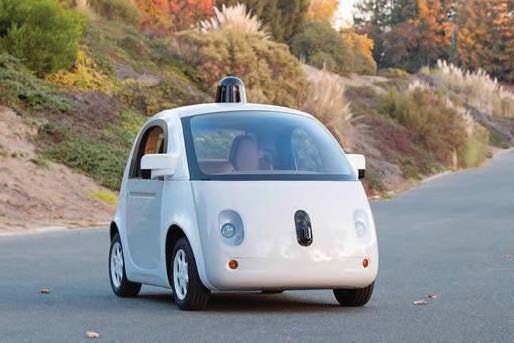Autonomous vehicles
Dr. Edward P. Becker | TLT Automotive Tribology October 2015
The move to self-driving cars is the next logical step in vehicle evolution.

Self-driving vehicles promise numerous advantages, including improved safety and fewer traffic delays.
www.canstockphoto.com
RECENTLY THE BBC SHOW TOP GEAR LISTED 11 REASONS to fear the arrival of autonomous cars (click
here). These self-driving vehicles promise numerous advantages, including improved safety and fewer traffic delays. I expected Top Gear to get around to the real reason they were skeptical of these vehicles, and sure enough, at number 11, they listed: “Because driving is fun!”
I find it interesting that driving is now, at least occasionally, considered fun. I think autonomous vehicles are the logical extension of cars doing more and more without human interaction. The first commercially successful automobile is widely considered to be the 1885 Benz, for which Carl Benz received a patent in 1886. By 1924, there were more than 17 million vehicles on the road.
However, motoring (as it was called back then) was far from a pleasurable experience for most. Consider the steps necessary “To Start the Engine” from a 1924 publication (
1).
1.
Place the gear shift lever in the neutral position.
2.
Put the emergency brake on.
3.
Retard the spark fully.
4.
Open the throttle about one-third.
5.
Put the switch in the “On” position.
6.
Prime the carburetor with the choking lever.
7.
Move to the front of the car and place feet wide apart.
8.
Grasp some part of the car with the left hand.
9.
Grasp the starting crank with the right hand, starting with the crank near the lowest position.
10.
Turn slowly clockwise until the crank engages the crankshaft.
11.
Brace yourself and pull up quickly on the crank, turning the engine about one-half revolution.
12.
If the engine does not start, repeat steps 9-11.
13.
If the engine still does not start, “spin” the engine by cranking for a full revolution or more, taking care to increase momentum during the second half-revolution to reduce the danger of a kick-back (which can result in wrist or arm injury, including fracture).
14.
After the engine starts, return to the driver’s seat.
15.
Advance the spark about two-thirds and close the throttle.
16.
Place left foot on the clutch and press hard to release the clutch.
17.
With the right hand, release the emergency brake.
18.
Move right hand to the gear shift lever and move the lever from neutral to first gear.
19.
With the right foot, press gently on the accelerator pedal and gradually release the clutch pedal with the left foot until the clutch begins to engage and the vehicle begins to move.
And that’s just getting started! The chapter goes on for six more pages on how to actually drive, including sections on shifting gears, reversing, stopping, turning and driving in traffic. By today’s standards, driving was clearly an extreme sport. Over the course of the next century, first mechanical and then electronic devices took over more and more of the tasks necessary to make vehicles run. The move to self-driving cars is the next logical step in that evolution.
REFERENCE
1.
Wright, J.C. and Smith, F.C. (1924),
Automotive Construction and Operation, J. Wiley & Sons, Inc.
 Ed Becker is an STLE Fellow and past president. He is president of Friction & Wear Solutions, LLC, in Brighton, Mich., and can be reached through his website at www.frictionandwearsolutions.com
Ed Becker is an STLE Fellow and past president. He is president of Friction & Wear Solutions, LLC, in Brighton, Mich., and can be reached through his website at www.frictionandwearsolutions.com.